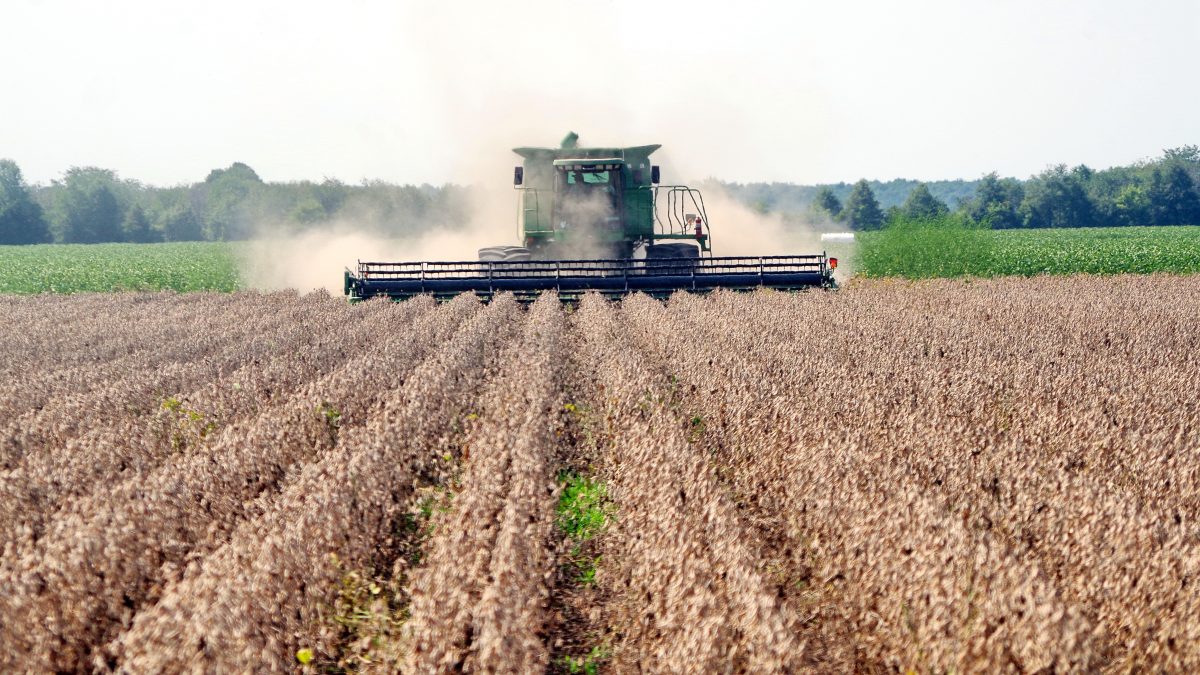Ongoing Supply Chain Issues Aren’t a Farm Supply Issue
TOPICS
Supply ChainGuest Author
Special Contributor to FB.org

photo credit: Arkansas Farm Bureau, used with permission.
Guest Author
Special Contributor to FB.org
By Jennifer Whitlock
It feels like every time I read or watch the news lately, one of the top headlines has something to do with supply chain issues.
Vehicles, toys, clothing and numerous other consumer goods are in short supply. That makes sense. They’re either made overseas or require parts from overseas, so if we’re experiencing cargo ship delays at ports on both sides of the ocean, I can see why those items are unavailable.
But what’s happening at the grocery store? Why, months after people stopped COVID-hoarding, are grocery store shelves going unstocked and labeled with “temporarily unavailable” signs?
It’s not because farmers and ranchers have quit growing and raising our food. Throughout the pandemic, farmers and ranchers have remained focused on their goal of providing safe, affordable food for their fellow Americans and themselves.
“Our bountiful food supply hasn’t stopped growing in the fields.”
They’ve faced plenty of challenges, to be sure. From bottlenecks at livestock processing facilities to increasing feed prices to less availability of important crop inputs like fertilizer and herbicides, farmers and ranchers have been impacted by supply chain issues.
But they’re dedicated. Focused. And resourceful. Our bountiful food supply hasn’t stopped growing in the fields.
Manpower at processing plants and food manufacturers—or rather, a lack thereof—seems to be the main culprit behind empty grocery store shelves.
Food and beverage companies have seen a dwindling labor supply for years, but the pandemic exacerbated those issues.
Employees who were let go or had their hours reduced at the height of manufacturing shutdowns and slowdowns are not returning, and not enough new people are coming in to take their place.
And without enough people, they’re not making enough products to keep up with demand. From the manufactured food items to the packaging those goods go in, manufacturers are feeling the pinch of not having enough help.
The same labor issue echoes throughout the rest of the food supply chain. Truck drivers, food service workers and grocery store employees are in high demand.
We need each link in our food supply chain to be operating optimally in order to keep the steady, affordable food supply we’re accustomed to in this nation.
It just may take a little longer to get back up to full speed.
So, remember when you can’t find a certain food or household item your family loves, it’s not because farmers quit growing the wheat and sugar or dairy farmers stopped milking their herds. It’s more likely the manufacturer simply cannot keep up with demand.
Farmers and ranchers shop at the same grocery stores as the rest of us. They’re disappointed when their favorite foods are out of stock, too.
Don’t hoard. Be reasonable in your purchasing habits, and know that farmers and ranchers are #stillfarming and #stillranching. And they’ll continue to do so.
Jennifer Whitlock is the field editor for Texas Farm Bureau. This column was originally published as part of the Texas Farm Bureau’s Texas Table Top series.